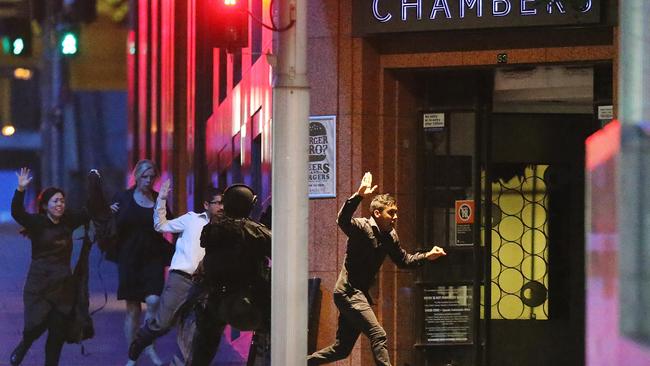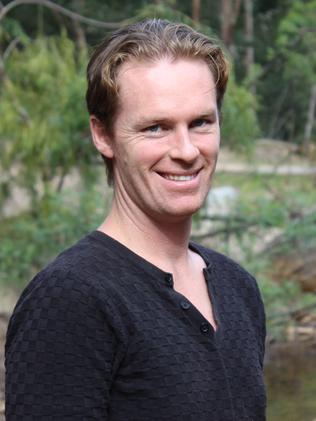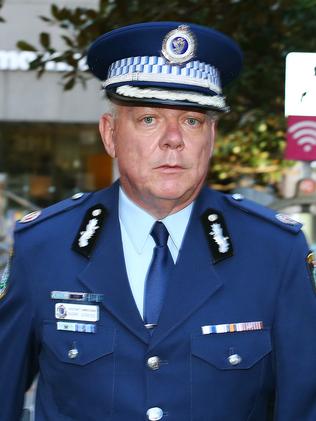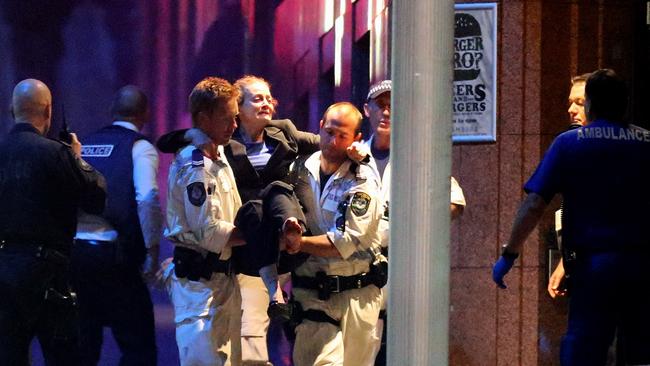Sydney siege inquest: Why gunfire failed to spark police action
THE police commander in charge of the final hours of the Lindt Café siege was in the dark about crucial information during the ordeal, he has revealed at the inquest.

THE police commander in charge of the final hours of the Lindt Café siege was in the dark about crucial information during the ordeal, he has revealed at the inquest.
Assistant Commissioner Mark Jenkins took over police command at 10.15pm on December 15 2014 until the end of the siege but didn’t even know the gunman fired a second shot before killing a hostage until six weeks ago.
Gunman Man Haron Monis — who had taken 18 people hostage in the cafe earlier that day — fired his first shot as several hostages escaped from the café at 2.03am. He fired a second shot at the building at 2.09am and executed cafe manager Tori Johnson at point-blank range five minutes later.
Mr Jenkins told the inquest he didn’t know gunman Man Haron Monis fired a second gunshot until “a month and a half ago”, more than one year on from the 17-hour siege that ended with three dead on December 16, 2014.
Counsel assisting Jeremy Gormly quizzed him over whether or not he would have ordered police to storm the cafe after the second shot if he was aware of the information at the time.
Mr Jenkins said the responsibility to make the call fell on the forward command post.
He said the first shot fired by the gunman as hostages escaped from the café didn’t prompt a rescue because the bullet went over the hostages’ heads and not into them.
He said the advice he received from tactical advisors was that the shot was not “deliberate” because it was aimed high.
While most of Australia watched the victims run for their lives onto the street as they were shot at on live television, Mr Jenkins told the inquest he didn’t see any of it while he was in command.


Mr Jenkins was at the Police Operations Centre when he was informed over the telephone that more hostages had escaped and shots had been fired. He said he didn’t watch the event unfold as it played out on live television.
“There was some conjecture about whether (the first shot was) fired at police,” Mr Jenkins said.
“I heard the shot was high.
“Those were the two pieces of information I had from tactical advisers and the forward command post (about the shots at that time).”
He said no information was relayed to him by anyone who did view the live footage.
“I wasn’t watching what was happening (on screen),” Mr Jenkins said.
“The information I was receiving was coming from the tactical adviser (over the phone).”
Mr Jenkins told the inquest the no footage was played back to him during the siege nor was any information relayed to him from anyone who had viewed it.
Counsel assisting Jeremy Gormly asked Mr Jenkins if he had access at his base in the police operations centre to CCTV footage of the café foyer during the siege.
“Not that I’m aware of,” he replied.
Mr Jenkins also revealed that he was not aware during the siege that a police listening device had picked up threats made by the gunman to hostages or that café manager Tori Johnson had been ordered to his knees before Monis executed him.
Mr Jenkins again reiterated that the order to activate an Emergency Action plan and send police into storm the cafe was not his call to make and instead fell on the forward command post.
He told the inquest he was “more optimistic in the five minutes before the first shot than (he’d) been all night” and had been working to meet the gunman’s demands of turning off street lights to negotiate an exchange for the release of all female hostages.
Mr Jenkins said the police response was to “contain and negotiate” unless someone was injured or killed or the risk of injury or death was imminent.
Mr Jenkins said the situation was not deemed high risk in the context of a siege where the gunman had hostages, a possible bomb and a firearm, because the bullet went over the heads of those who escaped and not into them.
“The immediate information I got was (tactical advisers) didn’t think it was an immediate Emergency Action situation because the shot was fired above their heads,” he said.
Counsel assisting Jeremy Gormly asked Mr Jenkins if an Emergency Action plan would have been triggered if the gunman was considered to be a bad shot instead of deliberately missing the hostages.
“It would be a consideration,” Mr Jenkins replied.

Mr Jenkins said he was advised by tactical advisers and the forward command that Monis was a threat but “unlikely” to kill.
He said there were inconsistencies with the gunman’s behaviour — including that he had allowed the hostages to move around freely — that were “confusing” and had contributed to the decision not to execute the Emergency Action plan until after a hostage was killed.
An Emergency Action plan was triggered seconds after Mr Johnson was killed with police storming the cafe 59 seconds later.
Barrister and mother Katrina Dawson was killed in the crossfire by a fragment of a police bullet.




